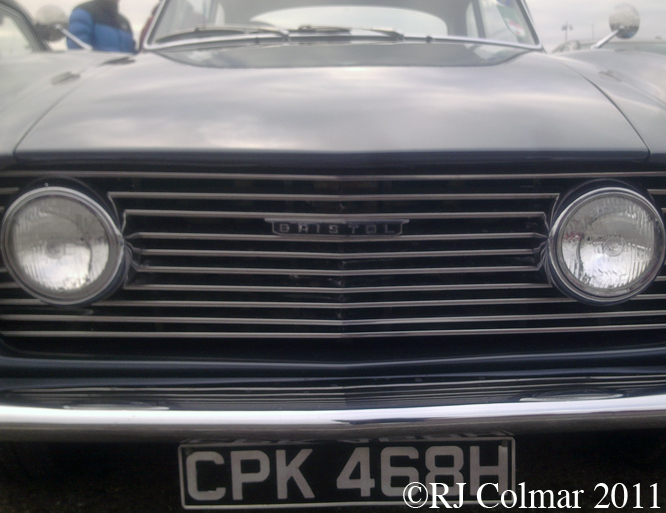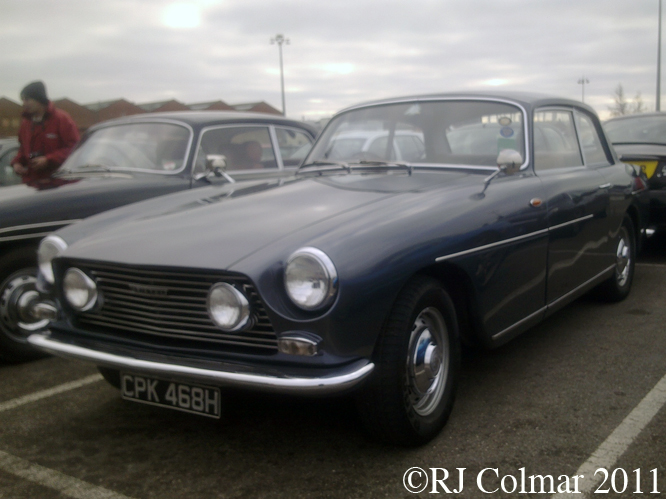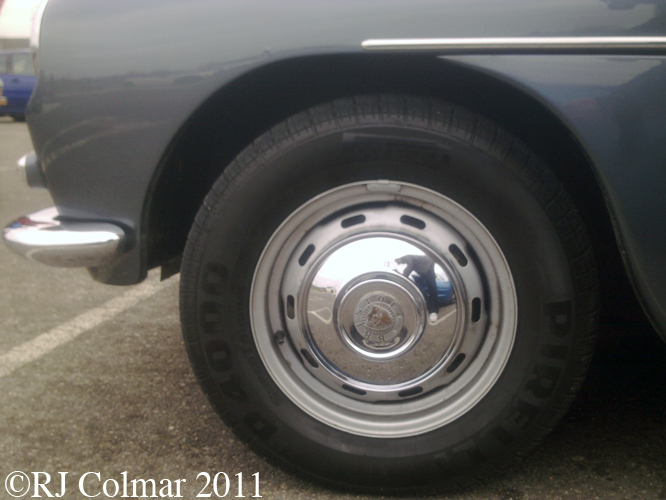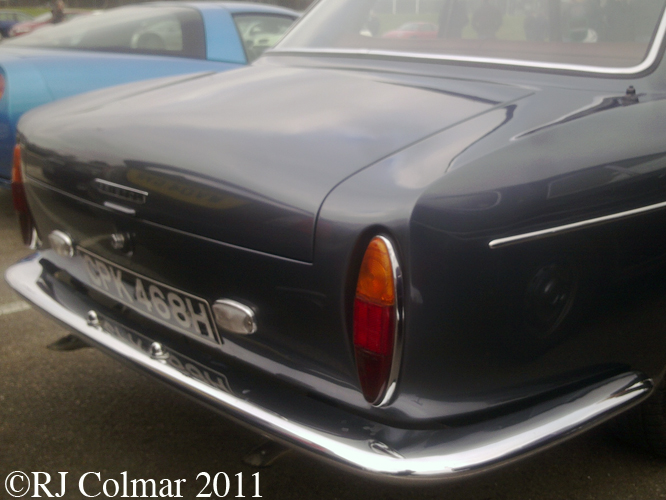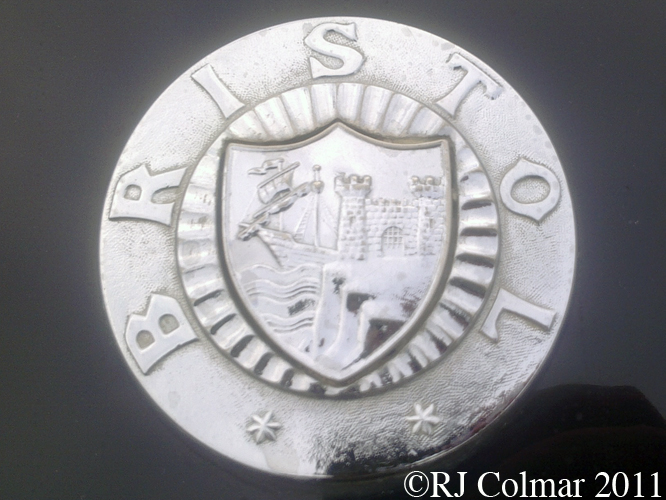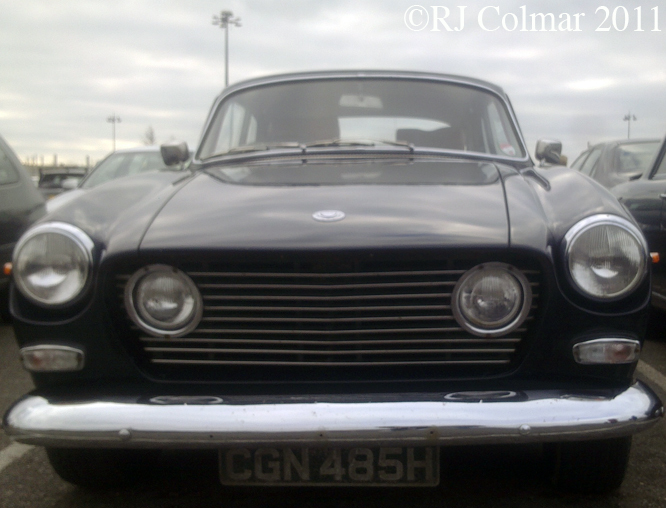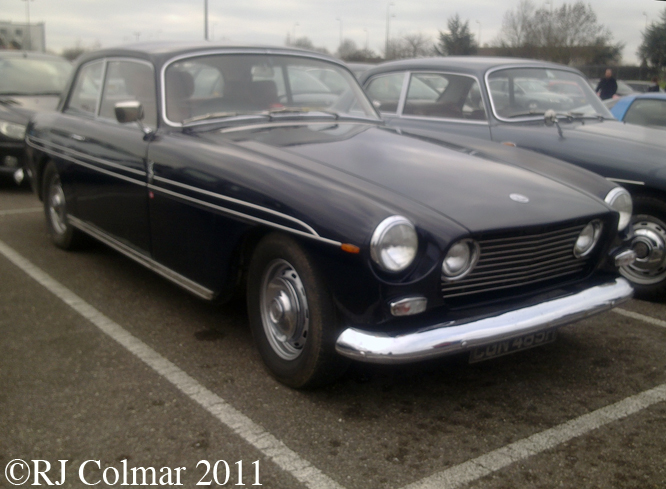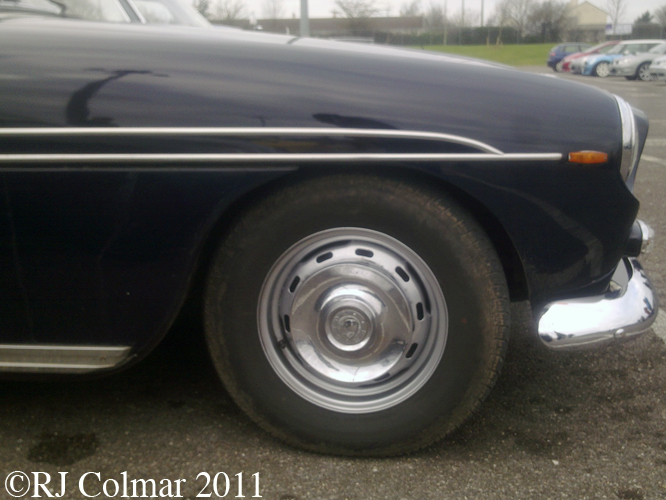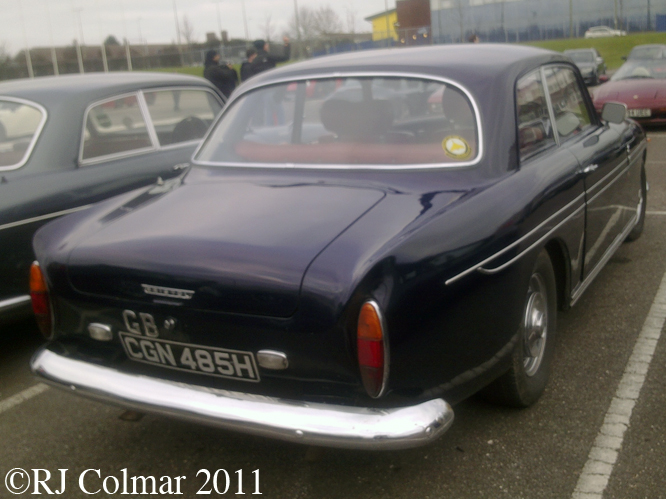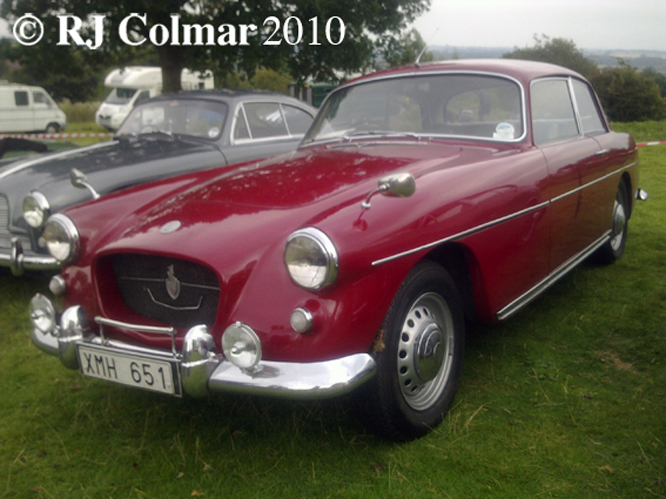The first blog I did on a Series 3 411 has been lost in the mists of Rowdy but a couple of photo’s remain.
Today’s model is a first series Bristol 411 built from 1969 to 1971 the first Bristol model to feature a big block B series 335 hp 6,277 cc / 383 cui motor with 30 % more horsepower than the previous model that gave this car a 140 + mph capability.
The original series 411 models featured slightly enlarged windscreens than the 410 an almost imperceptible difference that can be seen in this photo of a 411 in the foreground and 410 to the left of the photograph.
Sir George White one of the three Directors in Bristol Cars in 1969 suffered serious head injuries in a road accident in September 1969 so it was left to his partner Tony Crook to take over the reins at Bristol in Sir George’s absence a process that ended with Tony buying his partner out in 1973.
To help feed all that power to the road the rear axle was fitted with a limited slip differential (LSD) that allows some difference in angular velocity of the output shafts as long as there is some traction available on at least one of the wheels.
With thanks to the PistonHead who kindly brought this car to the recent Sunday Service at the BMW Plant at Cowley and to Cristopher Balfour who’s book ‘Bristol Cars a very British story‘ provided many of the insights in today’s blog.
Hope you have enjoyed today’s TV detective edition of ‘Gettin’ a lil’ psycho on tyres’ and that you will join me again tomorrow. Don’t forget to come back now !

